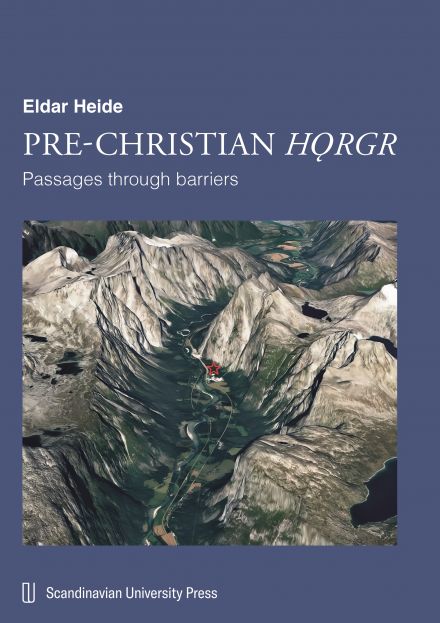Pre-Christian hǫrgr: passages through barriers
The cult-site type hǫrgr / hargher / harug / harag / hearg constitutes a tricky topic in Old Germanic religion. Since around 1900, the standard view has been that the essential meaning of the word was 'heap of stones', 'slab', 'mountain', and similar, understood as variations of the same idea.
The basis for this view turns out to be weak. Dictionaries of Old Scandinavian languages do give definitions of hǫrgr / hargher such as 'pile of stones, cairn'. But the texts present no reliable basis for these definitions. The Old Germanic texts cannot tell us what a hǫrgr etc. was essentially.
Etymological reasoning cannot solve the problem, either. An etymology close to the 'pile-of-stones' dictionary entries was established early on, and this etymology has heavily influenced the reading of the material. In turn, these readings have been taken to confirm the etymology, resulting in a circular argument.
In order to solve the problem, the present book examines the landscape around the places that bear hǫrgr / hargher names in Scandinavia, focusing on the ancient ones. It turns out that the landscape around most such places is linked to passages through landscape barriers of various kinds. A few seem to reflect man-made cultic constructions that consist of barriers with passages through them, thus imitating the landscape feature and forming a link to hǫrgr etc. in the sense of 'cultic building'.
The basis for this view turns out to be weak. Dictionaries of Old Scandinavian languages do give definitions of hǫrgr / hargher such as 'pile of stones, cairn'. But the texts present no reliable basis for these definitions. The Old Germanic texts cannot tell us what a hǫrgr etc. was essentially.
Etymological reasoning cannot solve the problem, either. An etymology close to the 'pile-of-stones' dictionary entries was established early on, and this etymology has heavily influenced the reading of the material. In turn, these readings have been taken to confirm the etymology, resulting in a circular argument.
In order to solve the problem, the present book examines the landscape around the places that bear hǫrgr / hargher names in Scandinavia, focusing on the ancient ones. It turns out that the landscape around most such places is linked to passages through landscape barriers of various kinds. A few seem to reflect man-made cultic constructions that consist of barriers with passages through them, thus imitating the landscape feature and forming a link to hǫrgr etc. in the sense of 'cultic building'.
Informasjon om boka
- Sider: 212
- Språk: Engelsk
- ISBN: 9788215067803
- Utgivelsesdato: 31.01.2025
- Bokgruppe: 217
